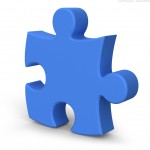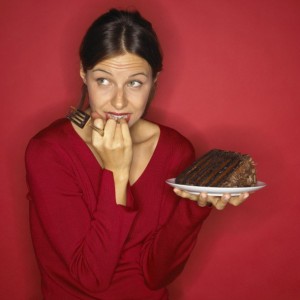 I just got a piece published in Newsweek! This makes me happy, to be sure. But if you see the paper version, the headline they picked does NOT appeal to me: “My Kool Acid Test”. Hmmm….not my choice, but I couldn’t talk them out of it. Oh well, it’s Newsweek, and I’m a shameless publicity hound these days…
I just got a piece published in Newsweek! This makes me happy, to be sure. But if you see the paper version, the headline they picked does NOT appeal to me: “My Kool Acid Test”. Hmmm….not my choice, but I couldn’t talk them out of it. Oh well, it’s Newsweek, and I’m a shameless publicity hound these days…
Here’s the link to the online edition. Below I’m going to paste in the UNABRIDGED text. Although I was after a story-line that focuses on the sixties, I think the “then and now” aspect is really interesting. And though they cut this part for the publication, check out the contrast between Ecstasy, today’s favourite party drug, and LSD, our drug of choice 40 years ago.
I’m a neuroscientist, I try and understand how the brain works, but I take a special interest in how it doesn’t work when people take drugs. That interest arose from memories of my own troubled youth: I used to be one of those people. For most of my late teens and twenties I ingested every drug I could find, and I became seriously addicted to hard drugs for part of that time. Now I try to make sense of those years, by exploring how different drugs modify brain function and how those modifications can become so terribly attractive. The drugs we find appealing reveal much about who we are; yet their effects remain mysterious, almost unknowable, until we look at the brain and its own intrinsic chemistry.
My drug-taking adventures began in the late sixties – when the world seemed wide open, waiting to reveal its wonders. I had just arrived in Berkeley, California, and my newfound friends and I were spellbound by the mind-expanding potential of LSD. But the world has changed since then, and the drugs we take today, including SSRIs and ecstasy, send our brains in a very different direction, toward comfort rather than freedom. The irony is that both these pathways begin with one very special molecule: a neurotransmitter called serotonin.
LSD (lysergic acid diethylamide) goes to work in the brain by blocking serotonin receptors, the gateways that allow serotonin into our neurons. As a result, serotonin molecules flowing from our brain stem have nowhere to go and nothing to do. Serotonin’s job is to reduce the firing rate of neurons that get too excited because of the volume or intensity of incoming information. That’s how it calms synaptic traffic, modulates extremes, regulates and supervises the brain. Serotonin filters out unwanted noise, and normal brains rely on that. So, by blocking serotonin, LSD allows information to flow through the brain unchecked. It opens up the floodgates – what Huxley called the “Doors of Perception” – and that’s just what it felt like the first time I took it.
My first acid trip was both wonderful and terrifying. I was in a friend’s apartment, among a rag-tag assortment of hippie types, and I swallowed a little purple pill during a prolonged Monopoly game. About 45 minutes later, the room started to disintegrate. I had to stop playing; I could no longer read the numbers on the dice. The dice, the plaster walls, the chattering voices, the facial hair of my compatriots – each perceptual gestalt broke apart into its constituent details, moving, changing, swirling, arranging themselves into patterns of geometric beauty or turgid ugliness. My senses and thoughts were out of control, and the world rushed in relentlessly.
LSD was invented by Albert Hofmann in the 30s, but its psychedelic properties were not apparent until he tried it on himself, in 1943, and thought he was going mad. For a couple of decades, psychiatric researchers tried to treat disorders ranging from schizophrenia to alcoholism with LSD. The CIA and US military got into the act in the 50s and 60s, with the hope of manipulating potential informers or instilling mass confusion in enemy troops. But the effects of LSD remained elusive and unpredictable. It was deemed more trouble than it was worth in government circles, but it found its true calling as the emblem of a generation intent on change. For my friends and I, LSD was revered as a key that could unlock human perception and redefine human potential. So I took acid at least once a week and watched the grain of the sidewalk separate into rainbow fragments, gazed at the canopy of a redwood forest devolving into geometric scribbles, or tossed in the surf of my own cognition as it swelled in profundity. I wanted to open up my senses, strip off my mental armor, and let reality enter. And I didn’t give up for several years, until acid finally became routine, and I got drawn toward darker adventures with addictive drugs, heroin among them.
Still, for those few years from 1968 to 1972 , acid seemed the leading edge of a culture bent on charting new territory. “The times they are a changin’” chanted Dylan, and the world seemed rich with possibilities. As far as my friends and I were concerned, LSD, mescaline, and psilocybin – all compounds that torpedoed serotonin – made that world accessible. Move over, serotonin. Safety is out. Infinity is in. So we popped our pills and wandered the frontiers of inner space. At least until the drug wore off and our serotonin molecules flowed huffily back into place.
In the last ten years, serotonin has again been the target of a culture-wide chemical invasion, but the new drugs shift human experience in the opposite direction. SSRIs (selective serotonin reuptake inhibitors) — like paroxetine (Paxil) and fluoxetine (Prozac) — are used to treat depression, anxiety, PTSD, OCD, and undefined feelings of ickiness. Instead of getting rid of serotonin, these drugs block the reabsorption process, so that serotonin keeps piling up in the synapses. The result: an extra-thick blanket of serotonin that filters out the intrusions of anguish and anxiety, making our inner worlds secure. Instead of turning on, tuning in, and dropping out, they help us turn off, tune out, and drop in – into a solipsistic safety zone, protected from too much reality.
Unlike the psychiatric researchers of the 50s and 60s, today’s psychopharmacologists are pleased with their progress. Every year or two, new and perhaps improved SSRIs are dumped into the waiting hands of millions of needy patients. (By 2007, antidepressants were the most pescribed drugs in the U.S., according to the Center for Disease Control.) But what do these new molecules tell us about our culture, about how we perceive our world? Apparently, now is not a time of exuberant exploration, but a time to hunker down and play it safe. The world seems too upsetting to wander in search of new adventures, too dangerous to explore beyond our own front porch. Instead of letting the world in, with all its uncertainties, we try to keep it out. And a barricade of serotonin makes that possible.
Even the recreational drugs of today’s youth point the weather vane of serotonin toward comfort rather than freedom. Ecstasy (MDMA) increases serotonin in the synapses, like a hyped-up antidepressant, making the world feel cozy. And while it’s true that most people don’t take serotonergic drugs, either from their doctor or their dealer, it’s no accident that those who do are resonating to a cultural theme much different from the optimistic vision of the sixties: Life is dangerous, protect yourself, or at least make yourself comfortable.
The drugs we take, the drugs we create, offer an idealized antidote to the cravings of our times. LSD was born from our craving for freedom. SSRIs reflect our need for security. Molecular makeovers never quite get us there, but they can show us where we are and where we’ve been.



